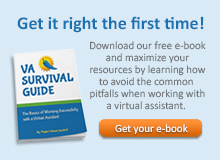Mass torts—cases with hundreds or even thousands of plaintiffs—can seem half opportunity, half chaos. With medical records and police reports, court filings and settlement talks, the number of loose threads is overwhelming. Even veteran firms can fall victim to missed deadlines, lost evidence, or angry clients if systems are not tight.
That’s why ahead-of-questioning practices are re-evaluating how they manipulate those instances. Instead of drowning in spreadsheets and scattered documents, many are turning to cause-built answers that convey order to complexity.
In this article, we’ll observe the most important demanding situations of mass tort litigation and how technology is reshaping the way companies maintain cases on the right track.
Understanding the Unique Challenges
Mass torts, in comparison to single private injury claims, encompass dozens or even hundreds of plaintiffs, each with their very own set of statistics. Managing these claims requires green systems to save you from missed deadlines, misplaced proof, and breaches of confidentiality. With the high level of confidential client information, robust data management procedures and secure storage systems are required. Failure to have proper systems can lead to lost deadlines, lost evidence, and breaches of confidentiality.
Another is maintaining individual client relationships in volume. If a firm is acting on behalf of hundreds of individuals, it is hard to keep everybody up to date without bogging down staff. Effective communication channels and centered sources are the solution. Finally, attorneys must consider patterns between cases to inform strategy. Analysis is laborious and error-prone to do manually; with analytics tools, firms can see trends and allocate resources as efficiently as possible.
Why Specialized Software Is Important
Processing mass torts on spreadsheets and loose folders is a recipe for disaster. Specialty software removes that burden by bringing everything—intake forms, medical histories, settlement demands—into a single, streamlined system. Rather than digging through documents or tracking down updates, attorneys can see the complete picture in a single dashboard.
Some key features tend to include:
- Centralized case information – All client information, filings, and documents reside in one safe place, minimizing the chance that something falls between the cracks.
- Automated workflows – Routine pleadings, updates, and reminders are created automatically, releasing personnel to concentrate on legal strategy.
- Client portals and bulk verbal exchange – Plaintiffs log in for real-time facts, whilst the team of workers ships mass notifications regarding rulings or milestones with a quick click.
- Analytics and reporting – Integrated equipment comes across agreement developments and flags bottlenecks, allowing businesses to make smarter, quicker decisions.
What actually makes the real difference is that a number of those segments work well together in a comprehensive mass tort case tracking system. Platforms built with a purpose and custom elements, like those offered by SmartAdvocate, showcase how technology can ease out the weight of high-volume litigation that too, while keeping client communication clear and non stop. For busy firms, that’s not just convenience—it’s peace of mind.
Selecting the Right Tool for the Job
Not every case management platform is built with mass torts in mind—and that’s where firms often run into trouble. Generic systems might work fine for small personal injury cases, but once you’re handling hundreds (or thousands) of plaintiffs, those tools start to show their limits. A good platform should feel like an extension of your practice, and not another pain to deal with.
When considering alternatives, ask yourself whether the software:
- Delivers pre-built intake forms that are able to gather distinctive information for mass tort cases without infinite customization.
- Enables customizable workflows so your staff isn’t confined to fixed processes.
- Seamlessly integrates with applications you already use—be it accounting software, email, or court calendaring systems.
- Provides robust security, such as encryption, audit trails, and role-based permissions—deal-breakers when dealing with sensitive medical or financial information.
Another important area is reporting. A great platform doesn’t only hold data—it interprets it. Find analytics that will be able to bring forward trends in settlement results, monitor the progress of cases, and identify where bottlenecks are occurring. These insights aren’t just time-saving; they inform strategy and resource planning right through the firm.
In the end, the best tool is one that integrates all of these capabilities into one platform. Instead of switching between different systems, attorneys have a central place for intake, document management, communication, and reporting. That unification doesn’t merely save admin hours—it keeps your team on the same page, ensures they can hit deadlines with confidence, and dedicate more energy to strategy and client advocacy.
Conclusion
Mass tort litigation is complicated, but it doesn’t have to be daunting. With efficient systems in place, companies can turn what appears to be a disorganized process into an organized, manageable procedure. Processes made more efficient, open communications, and smarter use of information all allow attorneys to meet deadlines and maintain their attention on the big picture. At the end of the day, technology has to make the administrative burdens less burdensome so that attorneys can do what they are best at—aggressively representing clients and pursuing meaningful outcomes in the courtroom.





